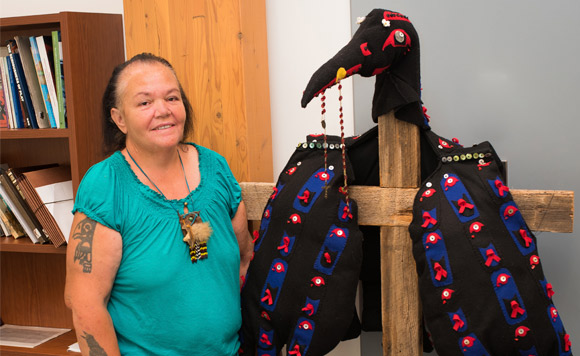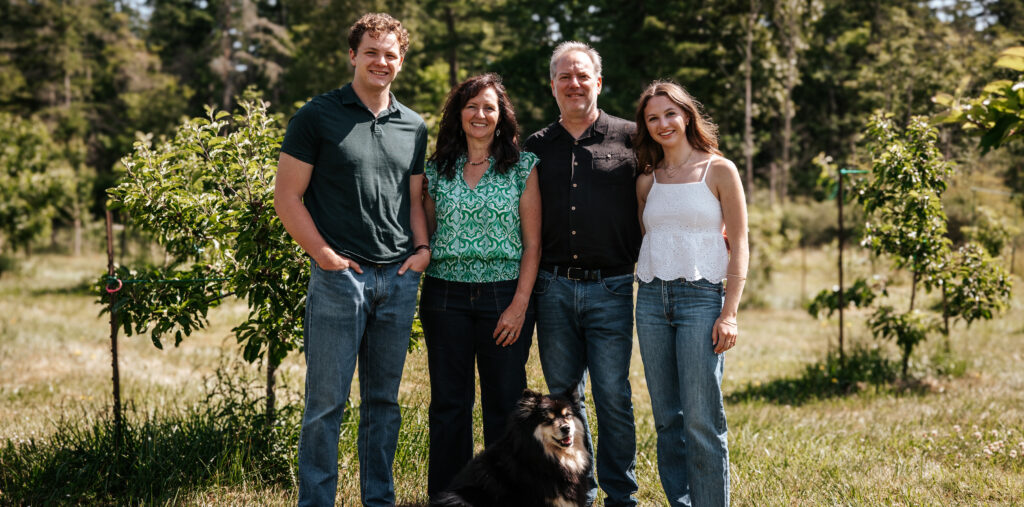by Jo Barnes –
Art can fascinate. It can inspire. It can even tell a story. But did you realize it can also heal?
In the midst of today’s movement towards First Nation reconciliation, art is a powerful tool that indigenous artists are using to express their thoughts and feelings, connect with the community, and help all of us move towards this goal.
“Art is a healing tool and gives you a platform. Art saves lives,” shares Rose Spahan, Indigenous artist, curator and teacher.
This reconciliation art is beginning to appear and inspire throughout the greater Victoria area.
Rose Spahan, for example, is the curator for “Sacred,” a multimedia display that opened in June 2018 at Victoria City Hall. The exhibit, created by Mohawk, Saanich, Cree, Métis, Navajo and Coast Salish artists, includes an LED light painting, exterior projection, photographic and silkscreened prints and an indoor mural.
“The name ‘Sacred’ is about honouring the old homestead, the lands and people of the Songhees and Lekwungen territory. It’s about reclaiming the space situated on Lekwungen territory. It’s also about reclaiming the sacred within you when you’re creating art,” says Rose.
Art is a way for First Nations artists not only to reflect on their history and perspective to the larger community, but to rediscover and learn that heritage.
“By exposing students to the process of creating, making mistakes, accepting change, starting over, improvising or not giving up have all been great additional benefits to the lesson itself. My own sister, an emerging visual artist, is discovering her indigenous heritage, culture and language through her art work,” says Jacqueline Jim, a SENĆOŦEN immersion teacher at ȽÁU, WELṈEW̱ Tribal School in Brentwood Bay.
Art is also an amazing tool for these artists to process their life experiences and help others understand their reality.
“It’s an effective way for Indigenous people to reach their community and express themselves,” comments Diane Thorp, President, ArtSea Community Arts Council.
An excellent example is “Raven and the Eyes of Stolen Children,” a fabric sculpture by Coast Salish artist Kathleen (Kathy) Rose Sears (above right). Awarded the Colin Graham Award for Innovative Work at the 2017 Sidney Fine Art Show, the powerful piece features a black raven perched around a large wooden cross, a rosary hanging from the raven’s beak. The raven’s body is detailed with blue fabric pieces bearing red ribbons and eyes.
“The red ribbons represent the children who survived the school (residential schools) only to take their own lives later on. The beads are actually a rosary that is meant to represent the church.”
The sculpture was lauded not only for its artistic presentation,
but also its cultural significance.
“This piece reflects the Church and the cost to First Nations Peoples. It’s a strong piece about residential schools and we knew it needed to be moved to an appropriate location. So, ArtSea purchased the piece. Curator Nick Tuele helped foster a connection with UVic First People’s House and we gifted the piece to them. It’s now on display,” says Diane.
For its artist, the creative journey meant revisiting painful personal life experiences.
“Creating art like ‘Raven’ opens a floodgate of emotions and tears,” says Kathy.
Hearing her tell her life story can be a deeply affecting experience. Kathy shares about the horrors of the residential school system and precarious foster care, all of which led to mental issues and abuse through many generations in her family. Art for her is a way to process her life and also to educate others.
“I’m hoping that people will actually see the horrors that happened,” she says. “I’m hoping that people will stop saying, ‘Oh, get over it!’ We wouldn’t say it to a Jewish person or anyone else, would we?”
Reconciliation for this woman is not just a concept or political policy; it is very personal.
“It is time to start healing from the past,” she says.
Healing begins with the art itself. So take the time to look at these pieces yourself. You’ll hear the voices of the artists.
Photo by Nunn Other Photography.




